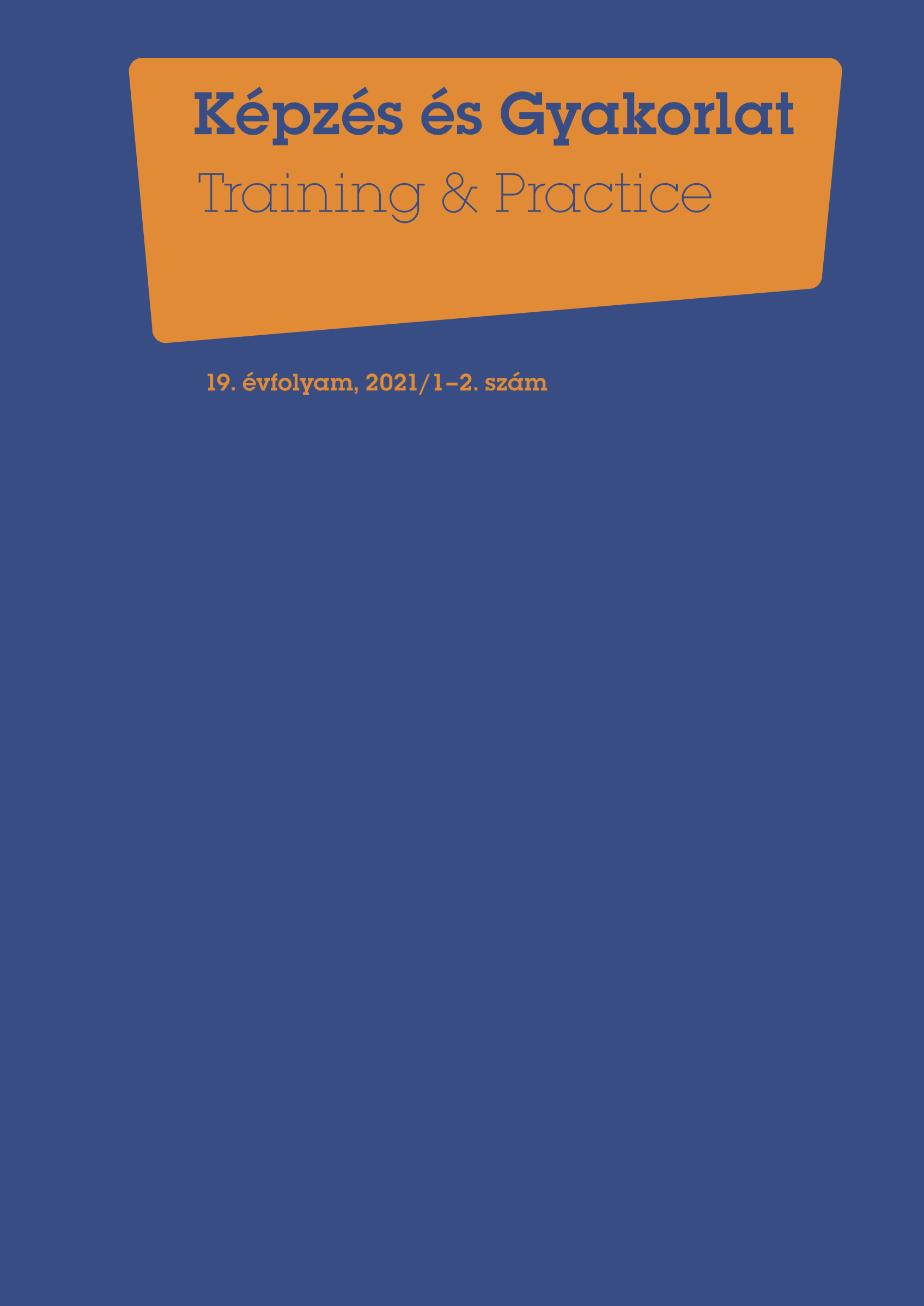A játékosítás lehetőségei a köznevelésben
DOI:
https://doi.org/10.17165/TP.2021.1-2.14Absztrakt
A játékosítást több mint tíz éve használják a vállalati kultúrában, ezzel növelik a produktivitást, az alkalmazottak motivációját és elköteleződését. Hasonló hatás érhető el a tanulási folyamatokban is. A nevelésben a játékosítással elért elkötelezettség növeli a diákok teljesítményét és javítja a tanuláshoz való hozzáállásukat. A játékosítás hatásának pszichológiai magyarázata van, a játékosság egyértelmű forrása a flow-élménynek. A játékosítás fogalmának egy 2017-es definíciója alapján bemutatjuk, hogy a játékosításnak jelenleg milyen gyakorlati felhasználásai és előnyei vannak a köznevelésben. Felsoroljuk a játékosítás leggyakoribb módszereit és elemeit, majd példákon keresztül megvizsgáljuk, hogy ezeket hogyan alkalmazhatjuk a diákok tudásának, motivációjának és elkötelezettségének növelésére. Mutatunk példákat helyes és helytelen alkalmazásokra is.
Hivatkozások
Anisa, K. K., Marmanto, S., & Supriyadi, S. (2020). The effect of gamification on students' motivation in learning English. Leksika, 10(1) pp. 22-28.
Bartle, R. A. (2003). Designing Virtual Worlds. New Riders Publishing.
Chen, J. J.-l. (2008). Grade-Level Differences: Relations of Parental, Teacher and Peer Support to Academic Engagement and Achievement Among Hong Kong Students. School Psychology International, 29(2), pp.183-198. DOI: https://doi.org/10.1177/0143034308090059
Csíkszentmihályi, M. (1985). Beyond Boredom and Anxiety: The Experience of Play in Work and Games. San Francisco: Jossey-Bass.
Deterding, S. (2012). Gamification: Designing for motivation. Interaction, 19(4), pp.14-17. DOI: https://doi.org/10.1145/2212877.2212883
Fredericks, J. A., Blumenfeld, P. C., & Paris, A. H. (2004). School Engagement: Potential of the Concept, State of the Evidence. Review of Educational Research, 74(1), pp. 59-109. DOI: https://doi.org/10.3102/00346543074001059
Gibson, D. C., Ostashewski, N., Flintoff, K., & Grant, S. (2013). Digital badges in education. Education and Information Technologies, 20(2), pp. 1-8. DOI: https://doi.org/10.1007/s10639-013-9291-7
Huizinga, J. (1944). Homo Ludens: A Study of the Play Element in Culture. Routledge & Kegan Paul Ltd.
Huotari, K., & Hamari, J. (2017). A definition for gamification: anchoring gamification in the service marketing literature. Electronic Markets, 27, pp. 21-31. DOI: https://doi.org/10.1007/s12525-015-0212-z
Jackson, L. A., Witt, E. A., Games, A. I., Fitzgerald, H. E., von Eye, A., & Zhao, Y. (2012). Information technology use and creativity: Findings from the Children and Technology Project. Computers in Human Behavior, 28(2), pp. 370-376. DOI: https://doi.org/10.1016/j.chb.2011.10.006
Kapp, K. M., Blair, L., & Mesch, R. (2013). The Gamification of Learning and Instruction Fieldbook: Ideas into Practice. San francisco: John Wiley & Sons.
Keith, M. J., Anderson, G., Dean, D. L., & Gaskin, J. E. (2018). Team Gaming for Team- building: Effects on Team Performance. AIS Transactions on Human-Computer Interaction, 10(4), pp. 205-231. DOI: https://doi.org/10.17705/1thci.00110
Lister, M. (2015). Gamification: The effect on student motivation and performance at the postsecondary level. Issues and Trends in Educational Technology, 3(2). DOI: https://doi.org/10.2458/azu_itet_v3i2_lister
McGonigal, J. (2011). Reality is broken: Why games make us better and how they can change the world. Penguin Books.
Roy, A., & Ferguson, C. J. (2016). Competitively versus cooperatively? An analysis of the effect of game play on levels of stress. Computers in human behaviour, 56(March 2016), pp. 14-20. DOI: https://doi.org/10.1016/j.chb.2015.11.020
Russoniello, C., & O'Brien, K. (2009). The effectiveness of casual video games in improving mood and decreasing stress. Journal of Cyber Therapy and Rehabilitation, 2(1), pp. 53-66.
Sailer, M., Hense, J. U., Mayr, S., & Mandl, H. (2017). How gamification motivates: An experimental study of the effects of specific game design elements on psychological need satisfaction. Computers in Human Behavior, 69(April 2017), pp. :371-380. DOI: https://doi.org/10.1016/j.chb.2016.12.033
Seligman, M. E., & Csíkszentmihályi, M. (2000). Positive Psychology: An Introduction. American Psychologist, 55(1), pp. 5-14. DOI: https://doi.org/10.1037/0003-066X.55.1.5
Smith, R. (2011). The future of work is play: Global shifts suggest rise in productivity games. IEEE International Games Innovation Conference (pp 40-43). Orange: IGIC 2011. DOI: https://doi.org/10.1109/IGIC.2011.6115127
Suits, B. (1978). The grasshopper. Games, life and utopia. Toronto: Broadview Press. DOI: https://doi.org/10.3138/9781487574338
Treiblmaier, H., & Putz, L.-M. (2020). Gamification as a moderator for the impact of intrinsic motivation: Findings from a multigroup field experiment. Learning and Motivation, 71(August 2020) 101655. DOI: https://doi.org/10.1016/j.lmot.2020.101655
Vigotszkij, L. (1967). Gondolkodás és beszéd. Budapest: Akadémiai Kiadó.
Zichermann, G., & Cunningham, C. (2011). Gamification by Design: Implementing Game Mechanics in Web and Mobile Apps. Sebastopol: O'Reilly Media.
(1) Brandon Hall felmérése: https://b2b-assets.glassdoor.com/the-true-cost-of-a-badhire.pdf?_ga=1.197966311.937901208.1441835515 (utolsó letöltés: 2021.05.06.)
(2) Bunchball inc.: Gamification 101: An Introduction to the Use of Game Dynamics to Influence Behavior http://jndglobal.com/wp-content/uploads/2011/05/gamification1011.pdf (utolsó letöltés: 2021.05.06.)
(3) Gamified UK játékelem listája https://www.gamified.uk/user-types/gamification-mechanics-elements/ (utolsó letöltés: 2021.05.06.)
(4) TalentLMS felmérése https://www.talentlms.com/blog/gamification-survey-results/ (utolsó letöltés: 2021.05.06.)
Letöltések
Megjelent
Folyóirat szám
Rovat
License
Copyright (c) 2021 Szabó Csaba, Szenderák Júlia, Szörényi Sára

This work is licensed under a Creative Commons Attribution-NonCommercial-NoDerivatives 4.0 International License.








